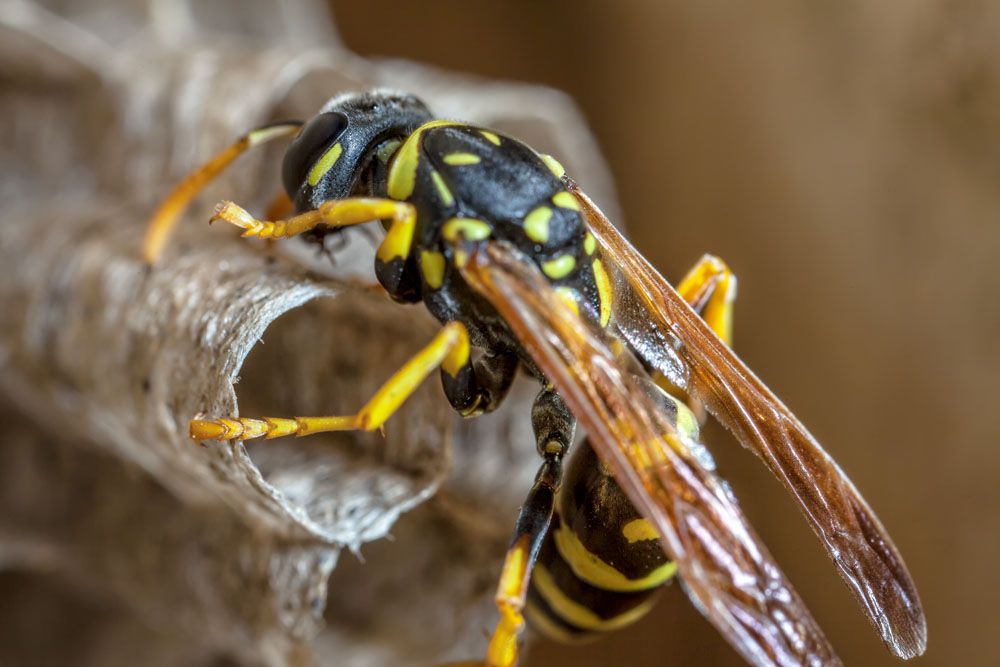
Paper Wasps – Vespidae
Paper Wasps
Family: Vaspidae
Common Name: Yellow Jackets, Wasps, Paper Wasps
Appearance: Paper wasps are almost 16 mm long and have a jet black, yellow or brown body with yellow or white stripes. They have antennae of body color and wings folded longitudinally at rest. They often bite humans when disturbed, and the affected area becomes swollen.
Host Plants or Food: General feeder. Mostly feed on caterpillars, flies, bee larvae, nectar, and honeydew.
Territory: Found Worldwide
Mode of Damage: Beneficial Garden Insect. They do not damage the plants and prey on small insects and plant pests.
Habits and Life History:
Paper wasps are found everywhere around us. They can be in the gardens, field crops, homes, old buildings, etc.
Like ants, paper wasps are also eusocial. They have one group of female queens and males and another group of female workers.
Female workers build the nest with mud and chewed plant material. They basically enlarge the existing nest.
Paper wasps undergo complete metamorphosis: egg, larva, pupa, and adult.
The Queen, after mating, flies off to search for wood material. After finding it, she chews and mixes it with saliva to form the paper nest.
Then she captures prey, chews it, and puts it into the nest. Then she lays eggs over the chewed prey.
The eggs hatch into larvae, and the larvae feed over the pre-chewed prey and undergo 5 moltings.
Finally, they develop into sterile females that help to expand the nest, male wasps that fly away to mate with other females, and fertile queens.
As the winter approaches, the fertilized queens hibernates while the working females devoid of food die, and the cycle repeats.
